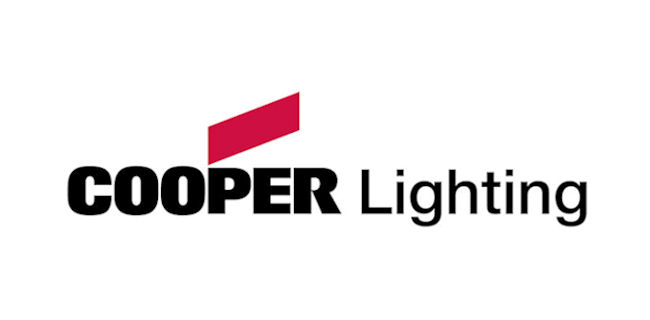
There is a big difference between saying you are an entrepreneur and being one. When I was busy planning my landscape business I read a story about Jim Koch, the founder of The Boston Beer Co. and brewer of Samuel Adams beer. He too was stuck in the planning stages of his entrepreneurial venture until his father pointed out one undeniable truth: You aren’t in business if you don’t have customers.
Those words instantly resonated with me, so I made a decision that Saturday summer morning to get out and get some customers. Not even having professional business cards, I wrote out my name, company name and phone number on 3×5 index cards. I was now in business—almost. I just had to find those customers.
Back then you could still ring doorbells and get an attentive audience, so that’s what I did. I drove to a neighborhood where there were plenty of newly constructed homes in need of landscaping. I vividly recall one conversation with a young attorney. He listened to suggestions and then gave me permission to engage my process. “Sounds good,” he said. “So, I guess, go ahead and take measurements. You know, do whatever landscapers do.”
What do landscapers do, I thought? I was like a deer in the headlights. Evidently, I hadn’t quite thought everything through, but being pretty good at thinking on my feet, I assured him I would be back to take measurements later that day after I retrieved my measuring tools from my truck. Truth is I didn’t even own a truck.
Upon returning home, my wife greeted me with a question that was a reflection of my previous months of procrastination.
“I suppose you just drove around the neighborhood for the past three hours,” she said. Proud to finally be in business, I replied with a smile, “No, I actually have three viable prospects and I don’t know what the heck I’m doing!”
Lesson 1. You don’t need to know everything about social media to get started. Just use good judgment and learn as you go.
In order to learn how landscape businesses operated I revisited a few local suppliers that I had worked with when I landscaped my own home. They referred me to other contractors who were busy, and probably reluctant to introduce a new competitor to an already crowded market. Nevertheless, a few agreed to meet on their job sites to show me how they were doing the work. What I learned was both fascinating and disturbing.
Everyone was doing it differently. The equipment, materials and practices varied dramatically from company to company. When I asked questions, the normal response was the other companies may be getting the work done, but they were not using the best methods.
Each of those small business owners were like different chefs who believed their secret sauce was what every customer should have. Their respective methods all had their merits, but were nevertheless consistently different.
Lesson 2. Instead of copying other companies, seek to understand their methods to then develop better practices for marketing your business. The process described in Built-In Social will show you how.
Interestingly, there was one practice that all of these landscape businesses agreed on—advertising in the Yellow Pages. The Yellow Pages were without question the go-to source for finding businesses before the Internet and Google. I soon learned Yellow Pages advertising was expensive. I couldn’t believe how much money other companies were spending every month to be the one chosen by customers searching for a local landscape business.
To stand out in the Yellow Pages you needed to spend more for a larger and sometimes more colorful ad within your respective category. Since you were grouped together with all of your competitors, it was basically a game of who would be heard above the noise. Picture it as everyone trying to rank well for the same broad search terms, a game we all know has only a few winners.
Much like pay-per-click advertising enriches Google, the real winner with Yellow Pages advertising is the one who owns the game. If you have ever been pressured to buy a vacation timeshare, you have a pretty good idea of the tactics used to sell Yellow Pages advertising. Everything is predicated upon fear. The pitch is your company is going to fail if you do not spend heavily, and it worked nicely to create a neat little game with only one winner—the Yellow Pages.
Lesson 3. The one that owns the game is always has an advantage. Design your own game to assure your business success.
I didn’t like that game so I designed my own. In fact, during the 20 years I owned that business I never once advertised in the Yellow Pages, just as I have never paid for clicks to my websites. Yet, I consistently rank extremely well for my desired search terms. I chose to promote my landscape business in targeted community publications where the space was much more economical, giving me an opportunity to employ an entirely different approach—educating the community instead of emphatically announcing, “Buy me.” I appealed to reason by providing valid research and logical arguments to effectively the community members to become better buyers of landscape services, presumably my company’s services.
Because there was so much confusion about best practices in our industry, I continued to do research and learn from anyone that would talk to me, after which I applied my own perspective based upon my intimate knowledge of the communities I served. Then I took that information to the people in the form of descriptive educational messages with calls to action.
For example, hand-pruning ornamental shrubs produces a healthier plant with an extended life expectancy. Many companies were using power shears because it reduces labor and requires less skill. Nobody ever explained to the customer that investing in a better method of pruning would preserve the natural habitat of their plants, thereby extending their longevity and saving money in the long run. The caption of my announcement was, “Are your plants being sheared to death?”
That particular promotion, accompanied by my crude hand drawing, was hardly sophisticated, but it got people’s attention and the phone ringing. That was the goal—to get the phone ringing—and it worked. The homeowners only had to walk outside and look around to see that, in addition to their own landscape, there were many others that were not being well maintained.
I now recognize that I was practicing what is now commonly known as content marketing—using educational content to make a company more attractive to its desired customers by helping them solve problems—often problems they do not even know they have. Content marketing is now done digitally, and it is an essential component of your online marketing strategy.
Lesson 4. Use educational content to get your community thinking, and for sharing with friends that influence their buying habits and behaviors.
As my business grew, we began to achieve awards and other forms of recognition for our work and community service. This helped us to get mentioned in local newspapers, which was a powerful validation by an influential third party, and something that really got the phone ringing. To encourage more of this, I made the effort to build relationships with local editors and freelance writers, offering to help them out with story ideas and interviews.
I learned that the media is always interested in a good story. While there were others nudging the press to write a story about their company, I went a step further and wrote the story for them. They didn’t all get printed, but I quickly established myself as not only a subject matter expert, but one who could also take his expertise and make it interesting by wrapping a relevant story around it.
Lesson 5. Learn to engage your community with interesting stories about your business. Once in a while an influential connection will share your story and it will go viral.
Today influence is no longer localized among enterprises and media outlets as it was back then. It is dispersed among thousands of people and organizations that have learned how to use social media to engage a community. Celebrities clearly have broad influence, but across the globe regular people like you and me have specialized influence because we are subject matter experts, something social media is amplifying.
Content creates the potential for engaging a community with a business by giving it something to talk about. This is the attraction element. This was true with newspapers and other traditional media channels, and it is true today. The only difference is traditional media outlets are being outmaneuvered by digital ones that also happen to have a global reach. Blogs, in particular, are considered to be valid news sources, and therefore one of the most vital online marketing tools available to every business, large or small.
Just as there were few companies educating their communities when I started my business, so it is today. This is the opportunity that is yours for the taking.
While blogging and social media have matured in many ways, they are still ripe with opportunity. One reason for this is the Yellow Pages mindset is still alive and well. Many businesses are using social media to be heard, yet all they are really doing is adding to the noise level.
That’s not how social marketing works. You get results by helping your community, being a resource, solving problems, staying connected and engaging whenever possible, and occasionally asking the community to buy from you.
The truth is your community will want to buy from you if you properly establish your business as qualified, willing to help, and likeable. All of this can be readily accomplished by designing your business practices around the consistent needs of the consumers you want to attract and convert into customers.
Lesson 6. Recognize the opportunity for using digital media to be more socially engaged with the communities you serve.

